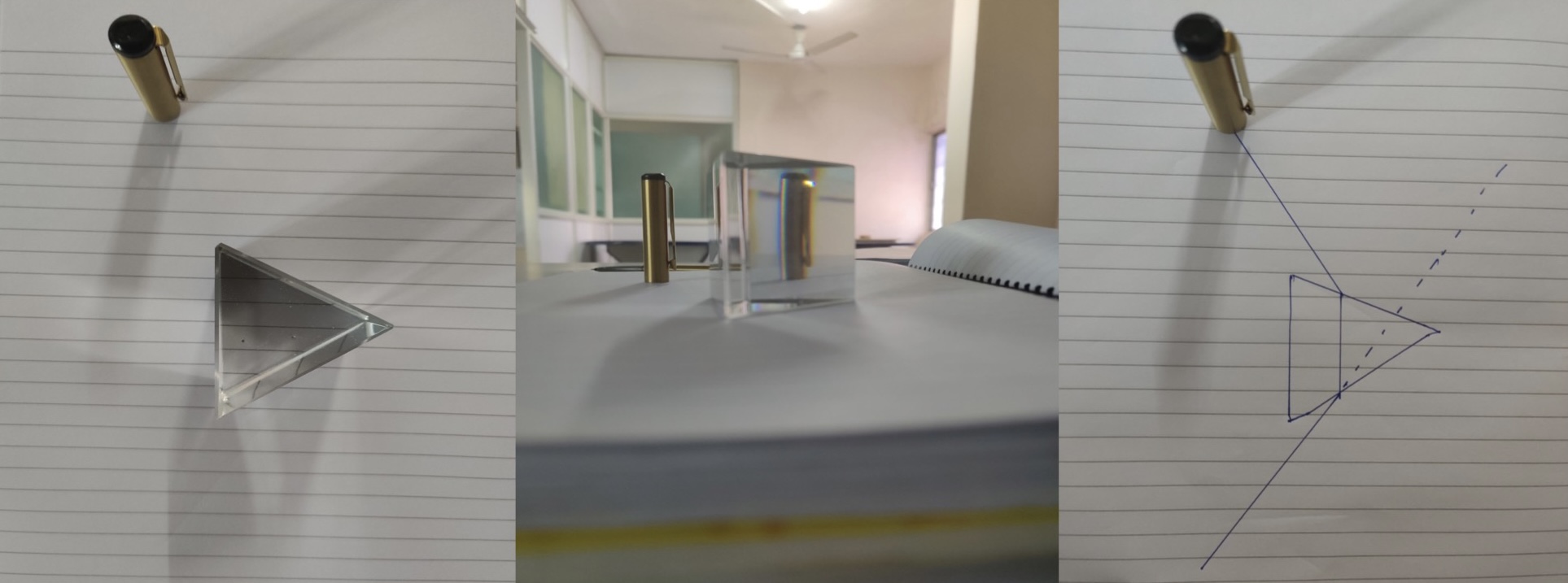Prisms are wedge-shaped lenses that divert light towards their bases without altering their vergence. An optical prism is a transparent solid device that bends light. It is often composed of glass or plastic. It has two flat surfaces that are usually inclined with one another, as well as a surface that isn’t parallel.
A prism can be made out of two flat surfaces that meet at an angle at the top. The prism’s peak is referred to as the apex, and its base is its wider bottom. Two angled refracting surfaces make up a prism. The angle between two surfaces is called the apical angle.
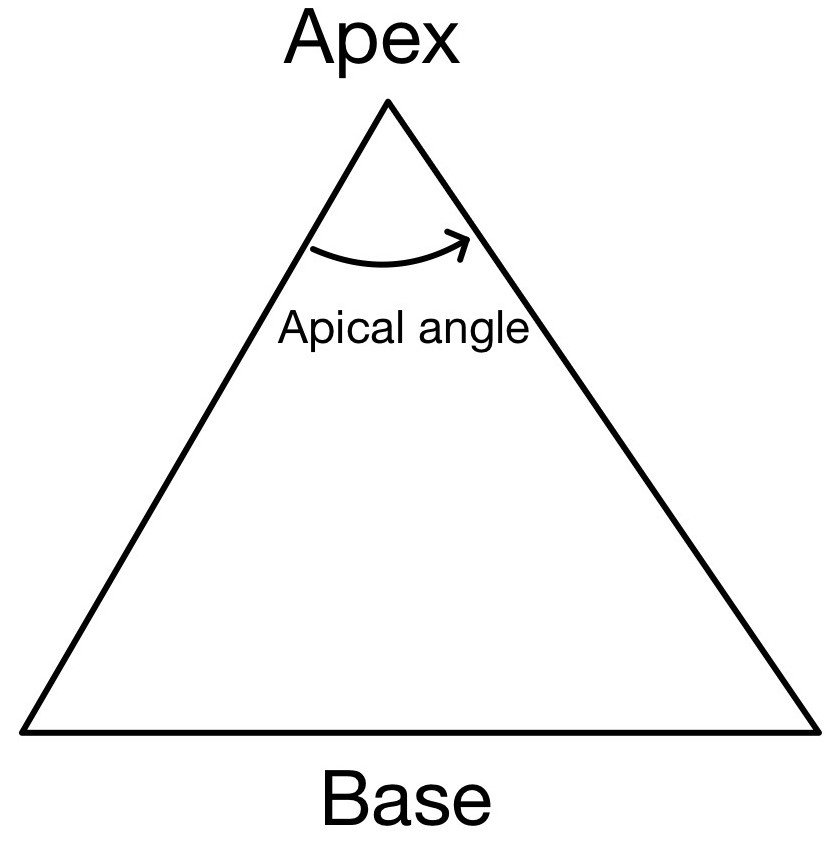
When a prism is prescribed, the base position—base in, base out, base up, base down—indicates the orientation of the prism. The light entering and leaving the prism are bend towards the prism base.
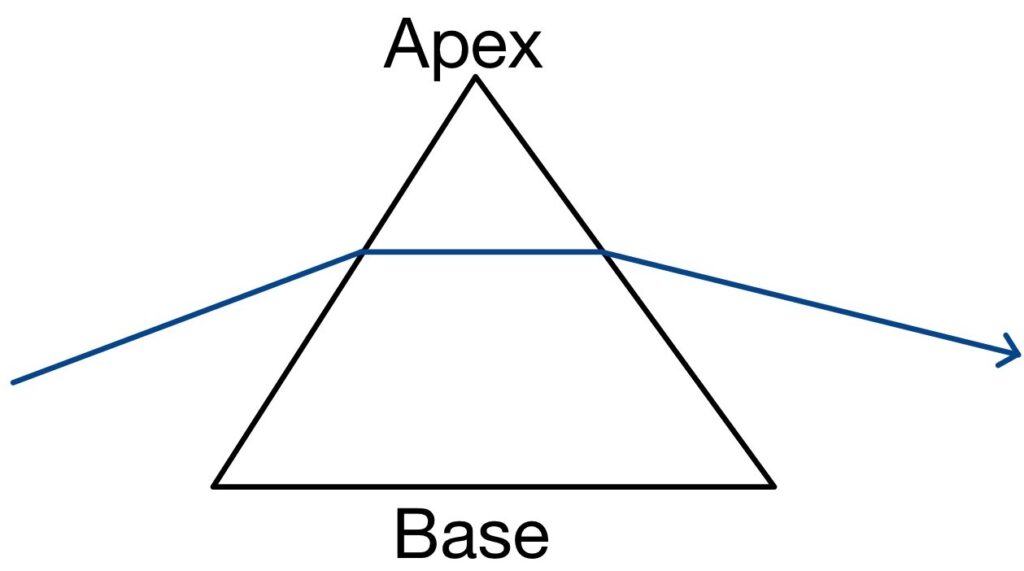
As a result, the item is displaced towards its apex. Thus a base-down prism will cause an object to appear moved upward when viewed through it.
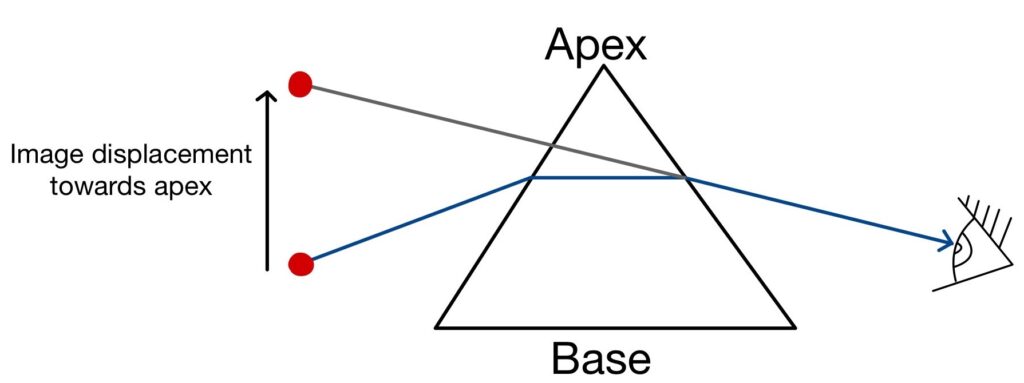

Prism Characteristics
- A prism has a thickest edge (the base) and a thinnest edge (the apex).
- A prism displaces the incident rays towards the base of the prism.
- A prism displaces the image towards the apex of the prism.
- A prism does not change the vergence of the rays.
- A prism does not magnify or minify the image.
- A prism also disperses incident pencil rays into its component colours.
Units of prisms
Multiple units can be used to express a prism’s power. The most common units are:
- The prism diopter
- The centrad
The prism diopter : One prism diopter is defined as, a prism which produces a 1 cm linear displacement of an object image on a screen which is situated 100cm or 1 m away from the prism.
Prism diopter= Deviation in cms / distance in meters.
It is denoted by △
If a prism is producing a 2 cm linear displacement of an object image on a screen which is situated 2m away from the prism, still prism diopter will be equal to 1 Prism Diopter.
Prism diopter= deviation in cms / distance in meters = 2 / 2 = 1 Prism Diopter.

The centrad
The only way that this measurement differs from a prism diopter is that the image displacement is measured along an arc that is 1m from the prism. The centrad provides a slightly larger angle of deviation than the prism diopter, but the difference is insignificant in practice as in optometry practice a small amount of prism diopters are used.
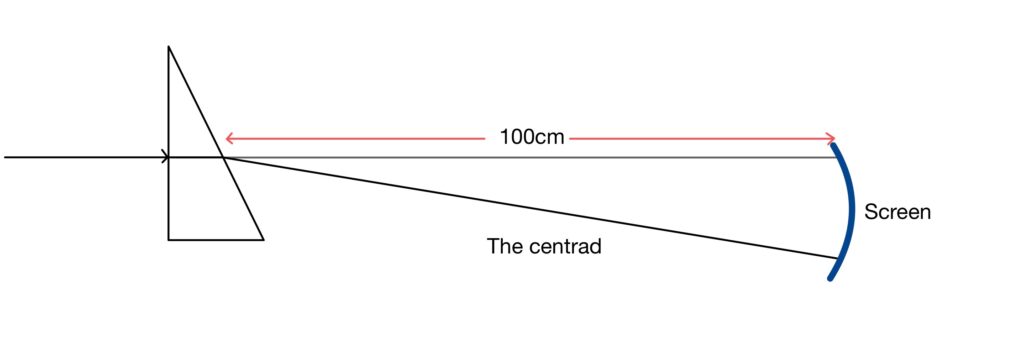
The amount by which a ray will deviate when it passes through the prism depends on:
- The apical angle
- The refractive index of the material
- The wavelength of the ray
- The angle from which the ray approaches the prism.
Lecturer (Nethradhama School of Optometry)
Moptom

